© 2025 MJH Life Sciences™ , Patient Care Online – Primary Care News and Clinical Resources. All rights reserved.
Ketamine as an Analgesic: An 11-question Quiz
Sample: For which type of pain is there the most evidence supporting the use of ketamine?
Ketamine, a phencyclidine derivative developed in the 1960s, has recently been used as a treatment for depression, which has received a great deal of attention. However, its efficacy and safety as an analgesic has been the subject of a great deal of debate given problematic side effects and recreational abuse. So, how much do you know about the use of ketamine as an analgesic? Take the 11-question quiz below to find out what you may, and may not, know about ketamine.Â

Question 1. Ketamine is an NMDA receptor antagonist. Which of the above µ-opioid receptor agonists is also an NMDA receptor antagonist?

Answer: B. Methadone. Methadone and levorphanol are the only currently available µ-opioid receptor agonists that are also NMDA receptor antagonists.

Answer: F. B and D. Ketamine has low oral bioavailability and when given orally, there appears to be an increased risk for adverse events.
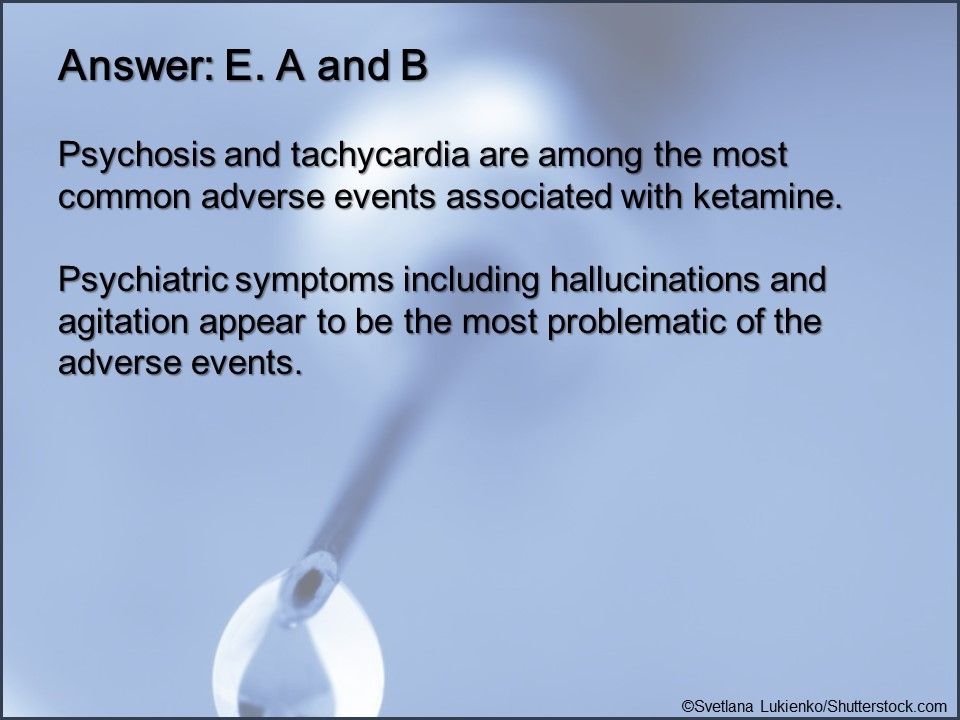
Answer: E. A and B. Psychosis and tachycardia are among the most common adverse events associated with ketamine. Psychiatric symptoms including hallucinations and agitation appear to be the most problematic of the adverse events.
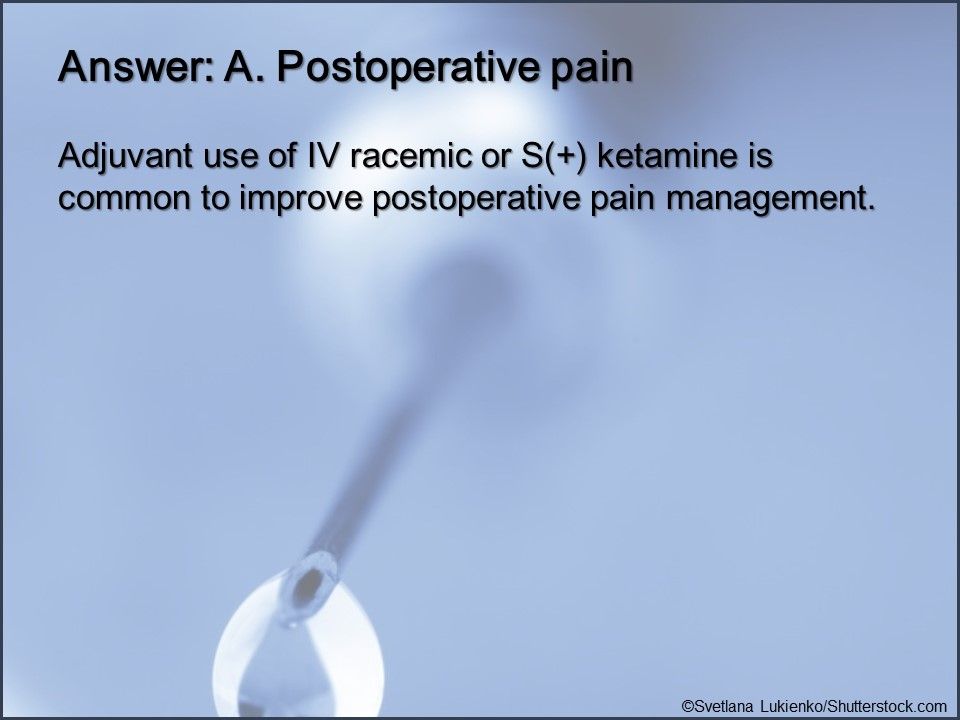
Answer: A. Postoperative pain. Adjuvant use of IV racemic or S(+) ketamine is common to improve postoperative pain management.

Question 5. With regard to postoperative pain management, ketamine has been reported to do all but which of the above?
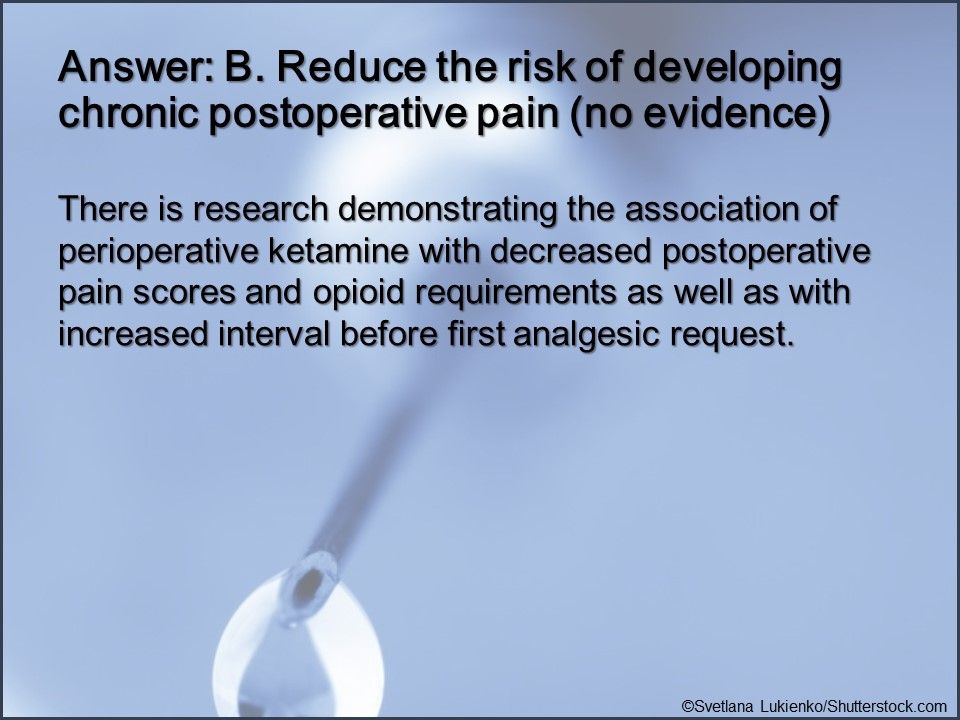
Answer: B. Reduce the risk of developing chronic postoperative pain (no evidence). There is research demonstrating the association of perioperative ketamine with decreased postoperative pain scores and opioid requirements as well as with increased interval before first analgesic request.

Question 6. Ketamine appears to be most effective for postoperative pain resulting from procedures involving which of the above?

Answer: D. A and B. Postoperative pain related to procedures involving the upper abdomen and thorax appear most likely to respond to ketamine; surgery involving both areas is associated with high levels of postoperative pain.

Question 7. True or false? Optimal doses of ketamine for treatment of postoperative pain have been determined.
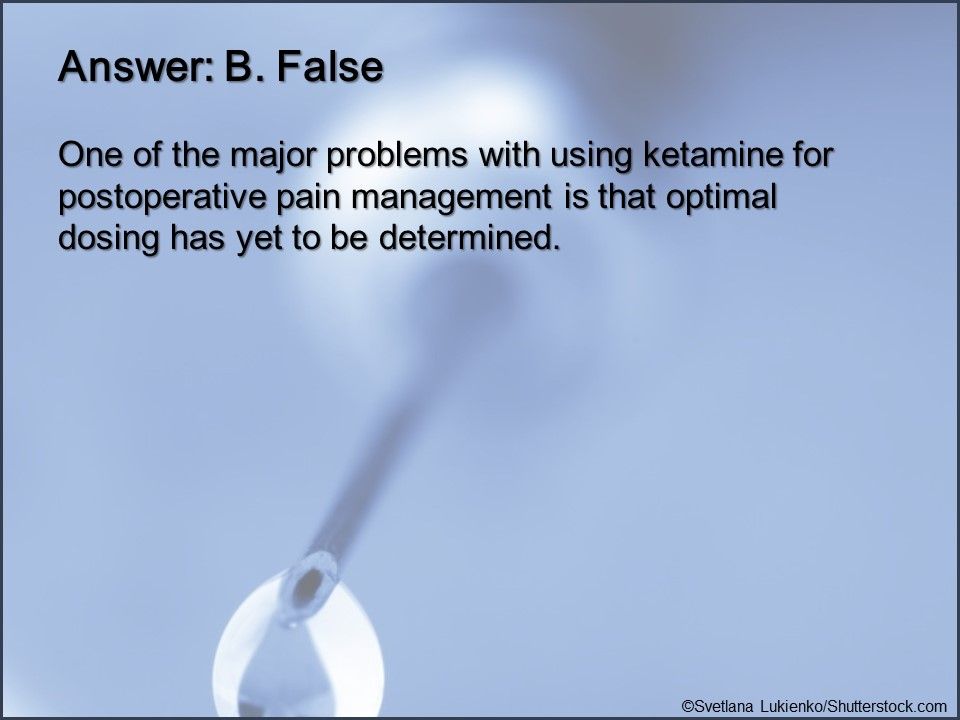
Answer: B. False. One of the major problems with using ketamine for postoperative pain management is that optimal dosing has yet to be determined.
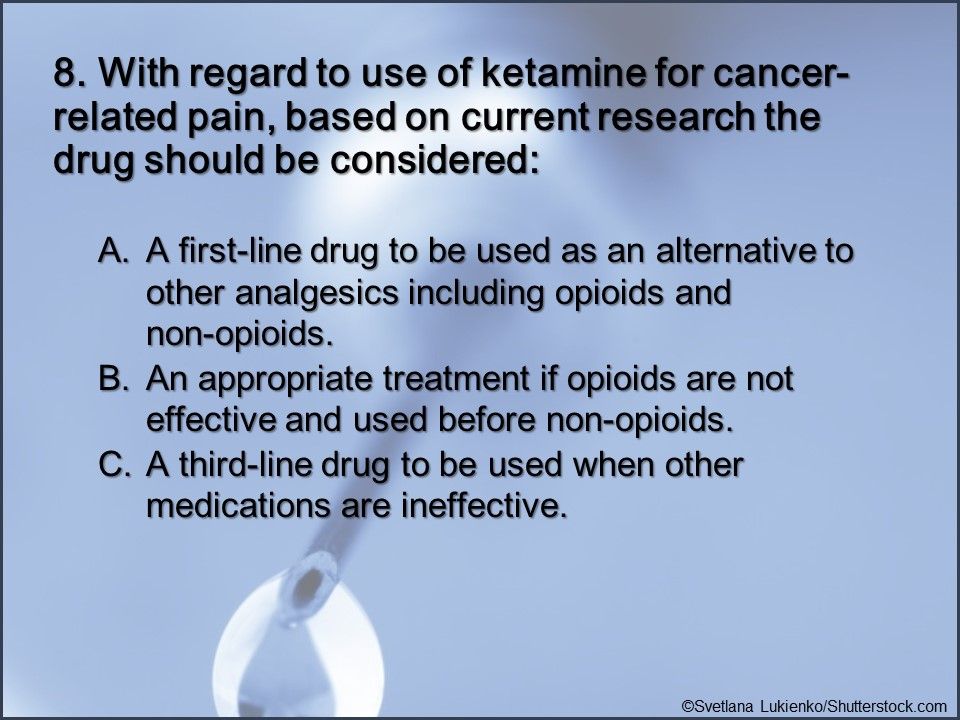
Question 8. With regard to use of ketamine for cancer-related pain, based on current research the drug should be considered which of the above?

Answer: C. A third-line drug to be used when other medications are ineffective. Ketamine should, at best, be considered a third-line drug for the management of cancer-related pain to be used after a patient has failed to respond to analgesics with substantial research supporting their efficacy in this setting.

Question 9. True or false? Predictive factors have been identified to help determine which patients with cancer are most likely to benefit from use of ketamine.
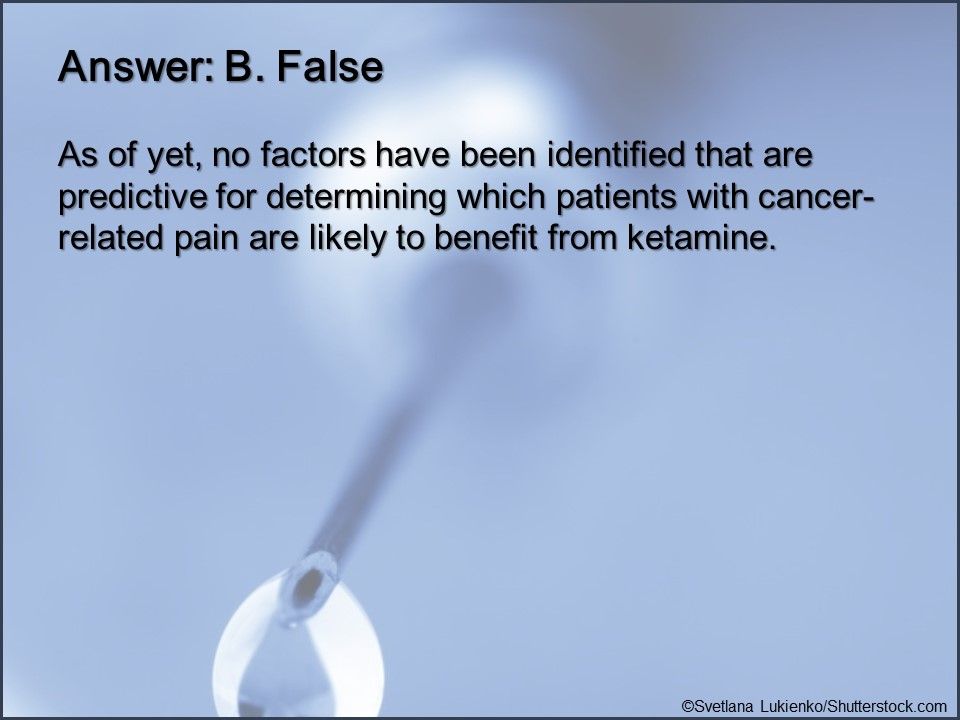
Answer: B. False. As of yet, no factors have been identified that are predictive for determining which patients with cancer-related pain are likely to benefit from ketamine.
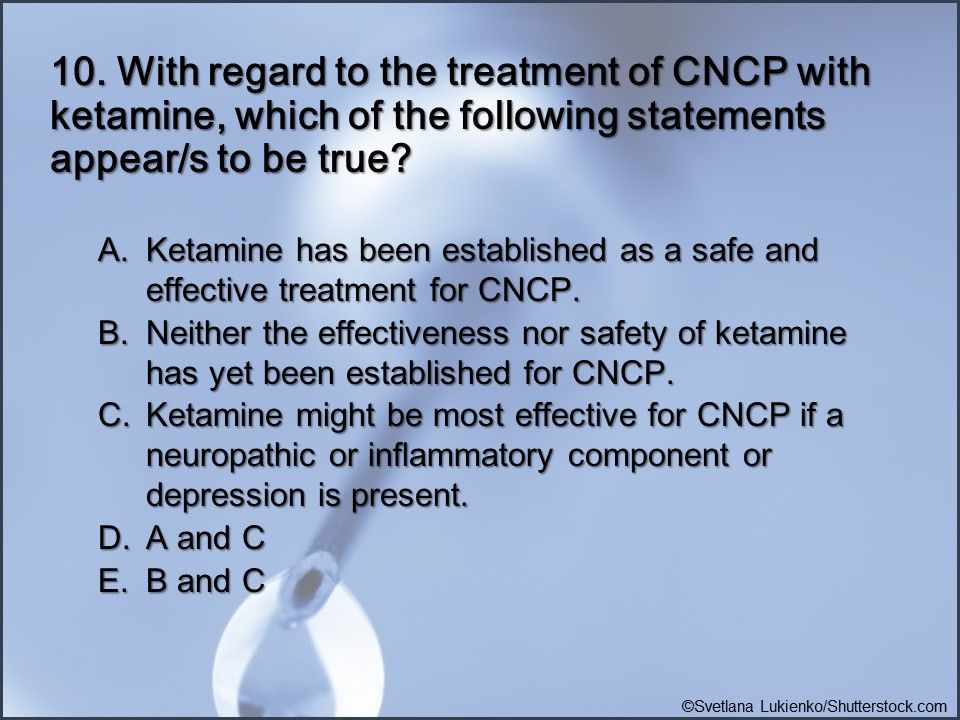
Question 10. With regard to the treatment of CNCP with ketamine, which of the above statements appear/s to be true?
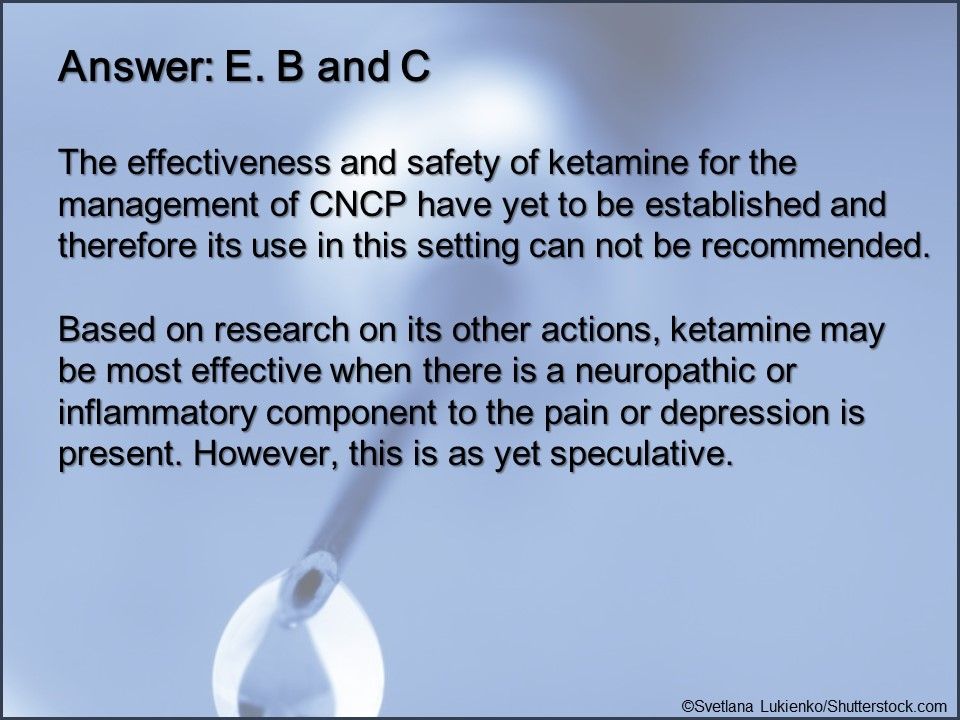
Answer: E. B and C. The effectiveness and safety of ketamine for the management of CNCP have yet to be established and therefore its use in this setting can not be recommended. Based on research on its other actions, ketamine may be most effective when there is a neuropathic or inflammatory component to the pain or depression is present, but this is speculative.

Question 11. True or false? The safety of long-term administration of ketamine has yet to be established.

Answer: A. True. The safety of long-term administration of ketamine is yet to be established and, because it is potentially addictive, its extended use can not be recommended.
Reference: Bell RF, Kalso EA. Ketamine for pain management. Pain Rep. 2018;3:e674.




